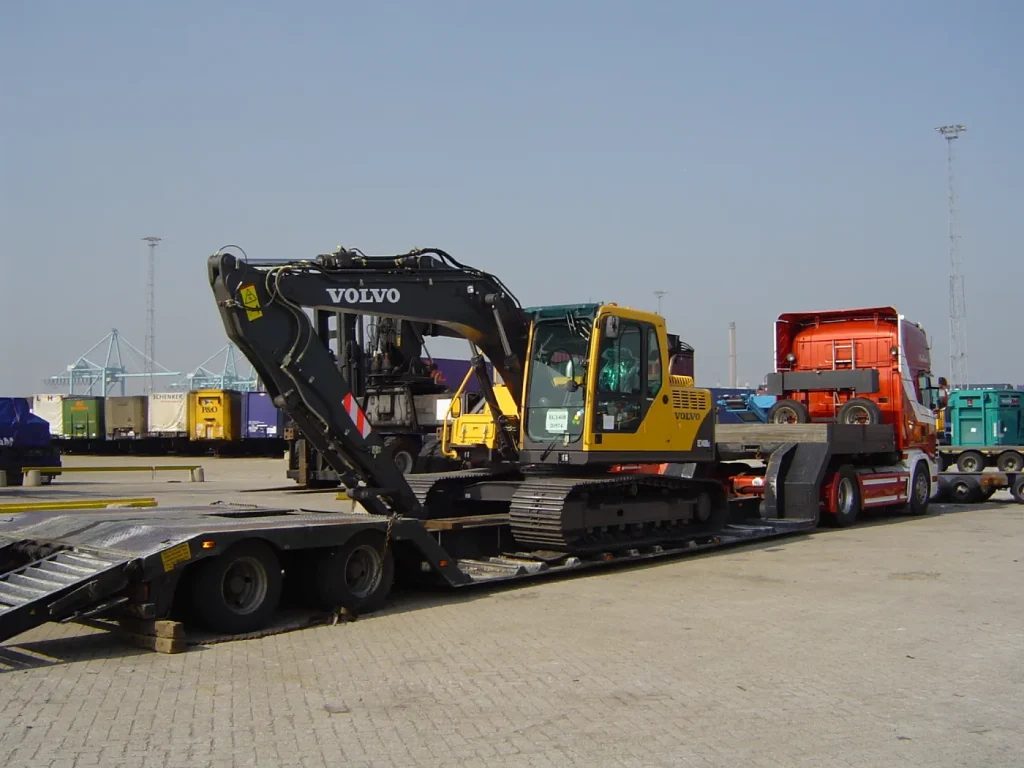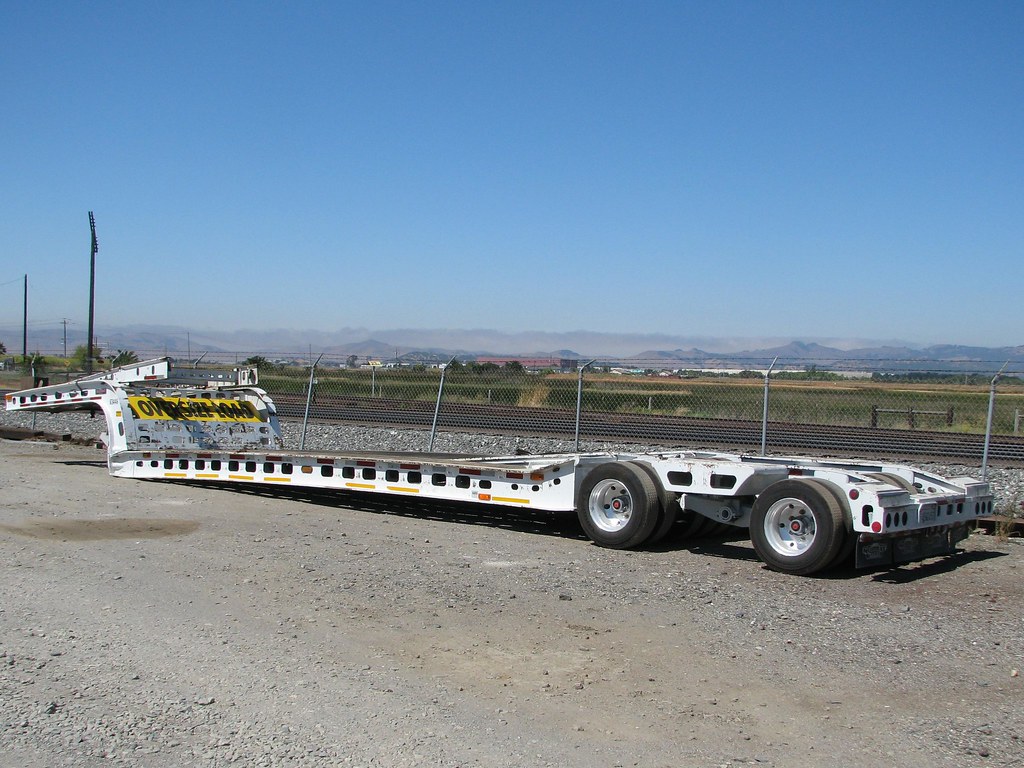RGN trailer, or Removable Gooseneck Trailer, is a type of lowboy trailer, distinguished by its ability to detach the front gooseneck, allowing the trailer bed to be lowered directly to the ground.
This unique feature creates a loading ramp, which is why RGNs are particularly well-suited for transporting oversized and heavy equipment that can’t be easily lifted onto other types of trailers.
Originating in the mid-20th century, RGNs were developed to address the logistical challenges of moving oversized loads safely and efficiently. Over time, they have evolved with the capacity to support extremely heavy weights, making them the go-to solution for transporting bulky, ground-based machinery.
RGN Trailer Specifications and Details
RGN trailers come in a range of sizes and specifications designed to meet various industry needs.

Typically, they can be found in standard lengths of 29 to 65 feet, though extendable models exist to accommodate longer equipment.
- Weight Capacity: Standard RGN trailers can usually haul up to 40,000 pounds on two axles, but multi-axle versions are available for loads that exceed 100,000 pounds.
- Height and Clearance: An RGN trailer’s bed sits lower to the ground, offering around 18 to 24 inches of clearance, which enables transporters to haul taller loads without exceeding height restrictions.
- Detachable Gooseneck: The detachable gooseneck feature gives the RGN trailer its name and functionality, making it simple to load items that would otherwise require specialized equipment.
One notable limitation is that these trailers require trucks with the appropriate hauling capacity. RGN trailers typically attach to heavy-duty trucks, often with higher horsepower engines to handle substantial loads.
Heavy-duty trucks, such as the Freightliner Cascadia or Kenworth W900, can typically tow loads exceeding 30,000 pounds. This capacity is essential for effectively hauling heavy equipment and machinery. Equipped with large, powerful engines (often diesel), these trucks deliver the torque necessary to move substantial loads, particularly when starting from a standstill or going uphill.
Just keep in mind that to have gooseneck compatibility, trucks must be equipped with a fifth-wheel hitch to connect with the gooseneck of the RGN trailer.
Trucks designed for hauling RGN trailers often include advanced weight distribution systems. These systems help evenly distribute the weight of the cargo across the axles, preventing overloading and ensuring compliance with federal and state regulations.
Drivers operating these trailers may need a commercial driver’s license (CDL) with endorsements for transporting oversized or specialized equipment.
When to Use an RGN Trailer
An RGN trailer is ideal whenever a load is oversized, too heavy for standard flatbeds, or requires ground-level loading. They are essential tools across industries where heavy, oversized, or exceptionally tall equipment must be transported safely.

For example, a contractor moving a bulldozer to a new site would benefit from an RGN, as the equipment can simply drive onto the trailer once the gooseneck is detached.
Here are some industries and items that require the use of RGN trailers:
- Construction: Bulldozers, excavators, cranes, backhoes
- Agriculture: Tractors, combines, harvesters, balers
- Military and Defense: Tanks, armored vehicles, heavy artillery
- Mining: Drills, loaders, mining vehicles
- Oil and Gas: Pumps, compressors, oil rigs, pipeline sections
- Renewable Energy: Wind turbine components, solar equipment
- Heavy Industrial Equipment: Large generators, transformers, compressors, boilers, and HVAC units
- Aerospace Parts: Aircraft engines, fuselage sections, and other large aerospace components
- Wind Energy Components: Wind turbine bases, blades, and nacelles, which are often oversized and challenging to transport
- Power Plant Equipment: Turbines, reactors, and other critical components used in power generation
- Bridge Beams and Infrastructure Materials: Large steel or concrete beams for bridges or buildings, oversized pipes, and precast concrete parts
- Marine Vessels and Parts: Yachts, large boats, and other marine equipment or sections for repair
- Rail Components: Locomotive parts, railway construction equipment, and rail cars
By lowering the deck, the RGN reduces the height of the load, making it easier to comply with road clearance regulations.
Legal Requirements
Each state has specific weight limits that trucks must comply with when hauling RGN trailers.
Depending on the cargo’s size and weight, special permits may be required for transporting loads with RGN trailers. Trucks must be equipped and registered to carry oversized loads, which often necessitates additional documentation.
Cost
The prices of RGN trailers can vary widely, with new trailers generally ranging from $40,000 to $150,000 and used models priced between $20,000 and $90,000.
Buying used can offer significant cost savings, but it comes with risks that require careful consideration. Depending on the age of the trailer, it may lack the latest safety features or innovations that new models include, which can be a significant consideration for compliance and safety.
A thorough inspection, attention to maintenance history, and compliance with safety regulations are crucial steps in the purchasing process.
Ultimately, whether to buy new or used will depend on your budget, needs, and willingness to take on potential risks associated with used equipment.
Are you a freight broker? We can help you get new shipper leads with active loads…






